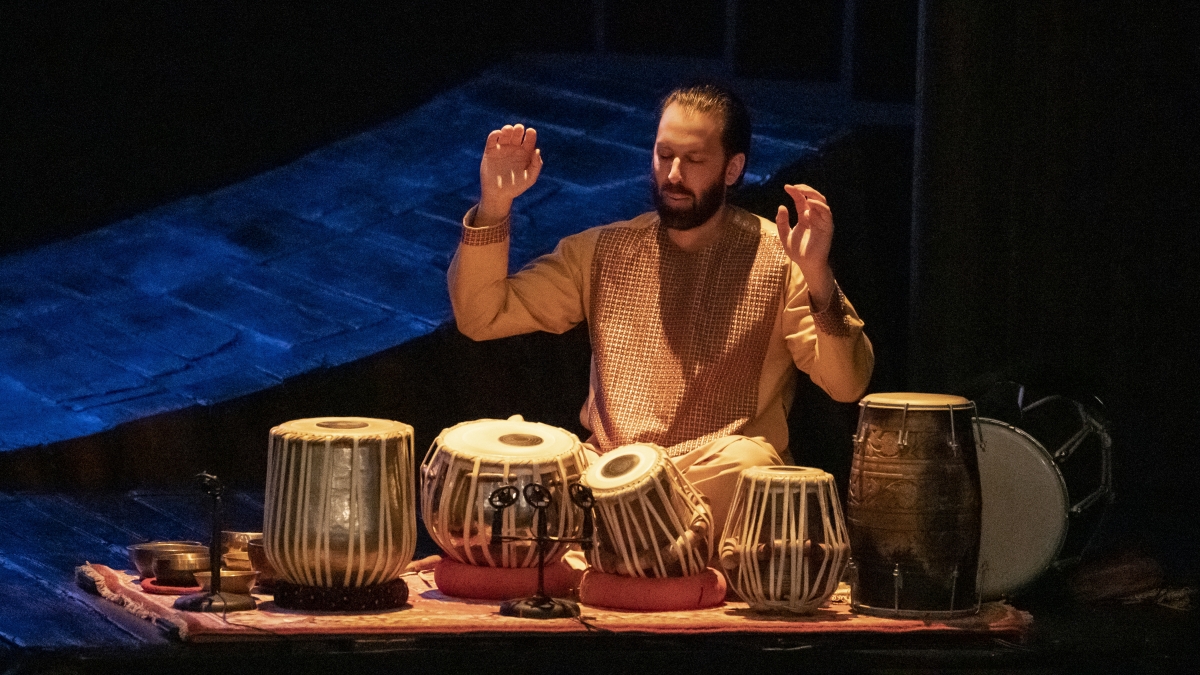Story of 'The Kite Runner' soars to incredible heights with musical accompaniment

A man that wears his heart on his sleeve, Salar Nader displays his culture and traditions proudly. Courtesy photo
Close your eyes and hear the music: tuneful plinks, thumps and a fast-paced rhythmic tempo that drives the story home. Open your eyes, and you come to discover this kind of percussion is 400 years in the making.
Thanks to tablaa set of two small drums whose pitch can be varied, used especially in India and played with the hands player Salar Nader, Western audiences will be enraptured by the sounds of Afghanistan, and with it, hear the voices of the voiceless when "The Kite Runner" comes to ASU Gammage on April 9–14.
Two decades ago, Khaled Hosseini’s “The Kite Runner” touched the hearts of many and became one of the most highly acclaimed novels of our time. Taking place in Afghanistan as well as the United States, it is a powerful story of friendship that follows one man’s journey to confront his past and find redemption.
When the novel was adapted for the stage, Nader composed and performed the musical score for its initial run at The San Jose Repertory Theatre, later reworking it and composing works entirely from the world of Afghan, Pashto folklore and ghazala form of amatory poem or ode, originating in Arabic poetry . His Broadway debut came in July 2022 as the onstage percussionist and music arranger for the play.
“It was a really big deal for me, (and) ... the Afghan American community at large, because I was one of two Afghans that stepped onto Broadway for the first time ever,” Nader said. “As a tabla player, it was crucial to pay homage to some of the master musicians who never had the chance to step onto a Broadway stage and celebrate those artists through the different traditional compositions they left for us.”
Among those instruments featured onstage are the tabla, the Afghan zehrbhagali (an underarm drum), the bami kabuli (a bass drum from Kabul), the dholaki paghmani (a double-sided drum from Paghman), the attan dhol (another type of drum) and singing bowls (bell-like bowls that emit sound as you rotate a mallet around the rim).
As of August 2021, music and other forms of creative art are banned in Afghanistan.
“I can only imagine if I didn't have access to my instrument and wasn't able to practice or speak through it — how devastating that would be,” Nader said. “I know I'm doing a service to our community because of the generations of young Afghans who will also dream to be on Broadway one day.”
For Nader, Act I of "The Kite Runner" reflects his own family’s story. He was born in Germany in 1981 to Afghan parents who were forced to flee their home during the Russian-Afghan war. Nader was just 5 years old when his family settled in the San Francisco Bay Area.
ASU Gammage had the honor of hosting Nader during the 2023–24 season announcement event in spring 2023. Nader touched the hearts of many through his tabla playing and Q&A session following the performance.
When asked why the story of "The Kite Runner" is so important, Nader paused before providing a gentle but straightforward response: “As an Afghan refugee and Afghan American, it’s a heavy time. The Afghan community — the women, the children — they've gone through a lot.”
Nader reflected on his brief but impactful performance at ASU Gammage and said he cannot wait to return and finish what he started.
“It's such an amazing and epic space to be in,” Nader said. “I can’t wait to be back there and bring a lot of joy and attention to a story that’s really important. A story like this helps to educate the masses. It opens the hearts and minds and builds bridges between people. For Afghans within the country or newly arriving to the U.S., they will have an identity through this story being told at ASU.”
More Arts, humanities and education

ASU’s Humanities Institute announces 2024 book award winner
Arizona State University’s Humanities Institute (HI) has announced “The Long Land War: The Global Struggle for Occupancy Rights” (Yale University Press, 2022) by Jo Guldi as the 2024…

Retired admiral who spent decades in public service pursuing a degree in social work at ASU
Editor’s note: This story is part of coverage of ASU’s annual Salute to Service.Cari Thomas wore the uniform of the U.S. Coast Guard for 36 years, protecting and saving lives, serving on ships and…

Finding strength in tradition
Growing up in urban environments presents unique struggles for American Indian families. In these crowded and hectic spaces, cultural traditions can feel distant, and long-held community ties may be…